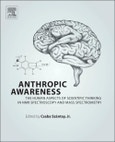It addresses the reasons why we are prone to make errors in our conclusions and how to avoid such mistakes, also exploring a number of the "mental traps" that can lead to both individual mistakes and mass misconceptions.
The book advocates that by understanding the nature of these mental traps we can adopt tactics to safely evade them. It includes Illustrative examples of common scientific misunderstandings and mental traps in both the theory and real-life application of NMR spectroscopy and mass spectrometry.
Please Note: This is an On Demand product, delivery may take up to 11 working days after payment has been received.
Table of Contents
Preface Part I. Anthropic Awareness (AA) 1. The philosophy of 'Anthropic Awareness' in scientific thinking Part II. AA in why-science: examples from NMR theory 2. An 'anthropically' flavored look at some basic aspects of NMR spin physics using a classical description 3. The ups and downs of NMR described by classical and quantum mechanics 4. The RF pulse and the Uncertainty Principle 5. On the nature of the RF driving field in NMR (with a look out on optical rotation) Part III. AA in what-science: small-molecule structure elucidation by NMR and MS 6. An 'anthropic' modus operandi of structure elucidation by NMR and MS 7. NMR methodological overview 8. MS methodological overview 9. Computer assisted structure elucidation in NMR 10. Structure elucidation of a mysterious trace component of ulipristal actetate 11. The adventurous discovery of the structure of a novel vincristine impurity 12. An elusive degradation product of ziprasidone 13. The case of an emotion- and 'emotycs'-laden structure determination of a small synthetic molecule with an unexpected structure 14. Self-induced recognition of enantiomers (SIRE) in NMR spectroscopy 15. Believe it or not: carbon protonation of the pyrimidine ring








